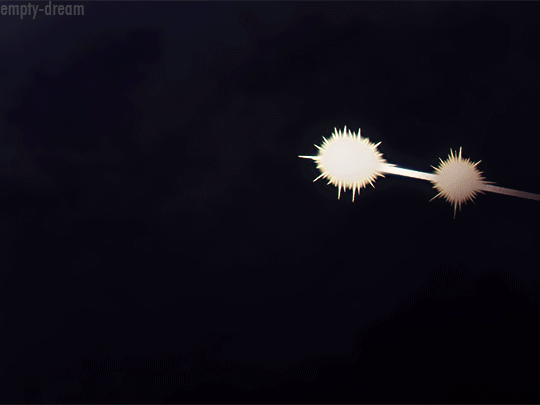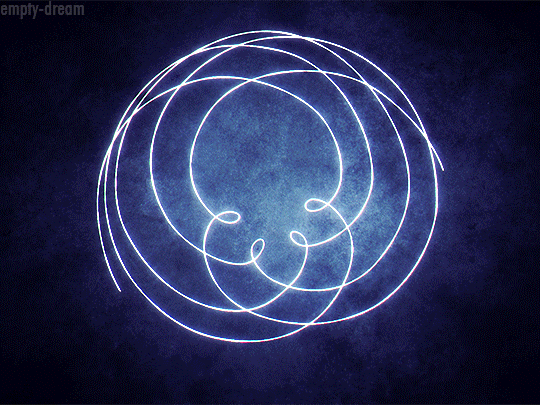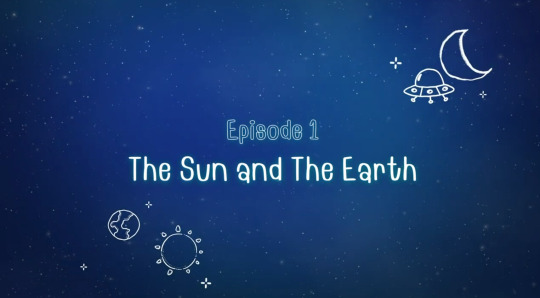#Geocentrism
Explore tagged Tumblr posts
Text
I will give geocentrists one thing;
If I was a peasant in the year 400 and when I looked up in the sky there were two glowing circles of same size, equal yet opposite in many ways, yeah I’d think that’s some divinely ordained balance of the universe shit.
The fact that the earth has exactly one moon and that said Moon and the Sun are exactly the right combination of size and distance to look the same in the sky from our perspective is an insane cosmic coincidence. and then sometimes they perfectly intersect and like holy shit
86 notes
·
View notes
Text

Q: You call them The Great Demotions, all of these thoughts which we have so cherished. Well, guess what? The universe doesn't revolve around the Earth. And guess what? The Earth isn't the only world out there. Are we still clinging to any conceits? Such as those which led to the Great Demotions over the past centuries?
Carl Sagan: Well, you would think we should be over it. But we still are battling, at least in the United States, the conceit that humans are separate from the rest of nature. That an unbridgeable gap separates humans from the other plants and animals. That we are the particular beneficiaries of the concern of the creator of the universe, more than any of the 10 million other species of plants and animals on the Earth. When, in fact, all of our vaunted uniqueness turns out to be shared. with other animals, especially with chimpanzees, our closest relatives with whom we share 99.6% of our hereditary material.
Another area in which the demotion is being fought is the idea that there are no other planets beyond those in our own solar system. But in the last 15 years, the most marvelous set of findings has occurred in which it now appears that planets are an ordinary, probably inevitable accompaniment of star formation, and that almost every young star, like the Sun in the early stages of formation, is surrounded by this flat disc of gas and dust over which the planets were formed. And we now have the first bona fide real planetary system around a very unlikely object, a particular pulsar called 1257 plus 12. And the technology is just about to reach out and find whatever planetary systems there are nearby.
[ Note: As of September 2023, there are 5514 confirmed exoplanets in 4107 planetary systems. ]
And a third one is the idea that even if there are an enormous number of planets, only ours has life and intelligence. And there the story is open. We send spacecraft to other planets like Mars to see if there are any simple forms of life. We use radio telescopes to see if messages are being sent to us by civilizations on planets of other stars. So far, although there've been some very curious, tantalizing findings in both of those approaches, we have found nothing definitive, unambiguous evidence for extraterrestrial life. And the debate is still open.
In our ignorance, the geocentrists still find hope.
==
When their methods are so unreliable, hope is all they have.
#Carl Sagan#The Great Demotions#arrogance#geocentrism#creationism#divine creator#exoplanets#science#astronomy#biology#nature#human biology#human exceptionalism#religion is a mental illness
67 notes
·
View notes
Text
youtube
she puts words & theory to so many things i've felt! especially the plurality of knowledge. and even the little science bro part of me that struggles to have faith in things. even though it sucks, i'm glad i'm not the only one❤️
#galileo#heliocentrism#geocentrism#scientific method#philosophy of science#dr. fatima#dr. fatima abdurrahman#women in STEM#STEM#Youtube
2 notes
·
View notes
Text

Found in the wild. I had not seen this one.
The ice wall thing just makes my brain hurt. This...is worse, more extended, and somehow also more racist.
6 notes
·
View notes
Text
Flat Earth Society

The Flat Earth Society is a group that promotes the belief that the Earth is flat, contrary to overwhelming scientific consensus and empirical evidence supporting the Earth’s oblate spheroid shape. The society is best understood as part of a broader historical and sociological phenomenon involving conspiracy theories, pseudoscience, and alternative belief systems. While the notion of a flat Earth is generally viewed as a long-debunked idea, the modern Flat Earth Society represents a small but persistent community that has adapted ancient cosmological beliefs into modern conspiracy-based frameworks. It is important to analyze this group through lenses of history, psychology, epistemology, and science communication.

Belief in a flat Earth predates modern scientific understanding and is found in many ancient cultures. Early Mesopotamian, Egyptian, and early Greek civilizations conceptualized the world as a flat disc or plane, typically surrounded by water. In ancient Norse mythology, the Earth (Midgard) was portrayed as a flat realm surrounded by a great ocean, while early Hindu cosmology described a flat Earth resting on the back of elephants and a turtle.
However, by the time of Classical Antiquity, the spherical nature of the Earth had been proposed and increasingly accepted among scholars. Greek philosophers such as Pythagoras (6th century BCE), Parmenides, and Plato speculated about Earth’s shape, while Aristotle (4th century BCE) provided observational arguments for a spherical Earth, such as the shape of the Earth's shadow on the Moon during lunar eclipses. The idea was empirically reinforced by the work of Eratosthenes (3rd century BCE), who accurately estimated Earth's circumference using shadows and geometry.
The myth that medieval Europeans broadly believed in a flat Earth has been thoroughly debunked by historians. By the early Middle Ages, educated European scholars largely accepted the Earth’s sphericity. This misconception was perpetuated in the 19th century as part of a narrative of scientific progress over superstition. Nevertheless, isolated instances of flat Earth belief persisted throughout history, often grounded in literal interpretations of religious texts.

The modern Flat Earth movement began in the 19th century with Samuel Rowbotham, an English writer and religious fundamentalist. Under the pseudonym "Parallax," Rowbotham published Zetetic Astronomy: Earth Not a Globe in 1865. His model described the Earth as a flat disc centered at the North Pole with a wall of ice (Antarctica) around the rim. Rowbotham’s approach, dubbed "Zeteticism," emphasized observation and common-sense empiricism over theoretical science. His experiments, such as the Bedford Level experiment, were claimed to support a flat Earth but were methodologically flawed and misinterpreted.
Rowbotham’s ideas gave rise to the Universal Zetetic Society in the late 19th century, spearheaded by followers like Lady Elizabeth Blount. The group produced newsletters and attempted to promote Rowbotham’s ideas to the public and scientific community. However, it remained a fringe group with minimal influence.
In 1956, Samuel Shenton founded the Flat Earth Society in Dover, England, with similar aims. Shenton was succeeded by Charles K. Johnson, who moved the headquarters to California and led the Society until his death in 2001. Johnson combined flat Earth advocacy with Christian fundamentalism and anti-government conspiracy theories. Under his leadership, the Society rejected not only mainstream astronomy but also NASA, satellites, and all photographic evidence from space missions. Membership peaked in the 1970s but declined sharply by the early 2000s.

Modern Flat Earth Society members typically espouse the belief that the Earth is a flat, stationary plane, often with the North Pole at the center and Antarctica as a surrounding wall. The Sun and Moon are usually believed to be small, local objects moving in circular paths above the plane, providing day and night cycles through spotlight-like illumination. Gravity is often rejected as a hoax or reinterpreted as a result of buoyancy and density. The most popular alternative explanation among flat Earthers for downward acceleration is that the Earth is accelerating upwards at 9.8 m/s², a model derived from a misapplication of Einstein’s equivalence principle.
Flat Earth models vary among adherents, with some believing in a dome-shaped firmament enclosing the Earth (echoing Biblical cosmology), while others assert a flat disc extending infinitely. Most models reject heliocentrism, instead adopting geocentric or non-standard frameworks. Some posit that the Sun and Moon move in circular orbits around the disc’s center, while the stars are embedded in a rotating dome or fixed canopy above the Earth. This pseudo-cosmology is often supported by cherry-picked or misunderstood scientific concepts.
Flat Earth beliefs are inherently conspiratorial. Members generally believe that world governments, scientists, educators, and space agencies are involved in a massive cover-up to suppress the truth about Earth’s shape. The motivations alleged for this deception range from control of knowledge to maintaining secularism or generating profit from space programs. NASA is a frequent target, with flat Earthers claiming all space photography and satellite images are fabricated or computer-generated. This narrative positions flat Earthers as truth-seekers defying a corrupt establishment.

The overwhelming body of scientific evidence confirms the Earth’s roughly spherical shape. This includes:
Satellite Imagery and Spaceflight: Thousands of images and videos from multiple space agencies (NASA, ESA, CNSA, etc.) depict a spherical Earth from orbit. Continuous satellite monitoring enables global positioning systems, weather forecasting, and telecommunications—all consistent with a globe model.
Circumnavigation and Time Zones: The ability to travel around the globe in continuous paths, the existence of time zones, and variations in star visibility depending on latitude all align with a spherical Earth.
Coriolis Effect and Foucault Pendulum: Observed physical phenomena such as the Coriolis effect (influencing weather patterns and ocean currents) and the Foucault pendulum (demonstrating Earth’s rotation) require a rotating, spherical Earth.
Lunar Eclipses: During a lunar eclipse, the Earth casts a round shadow on the Moon, consistent only with a spherical shape.
Gravitational Consistency: The behavior of gravity and the observable consistency of downward acceleration globally can only be explained by a spherical mass attracting objects toward its center.
Flat Earth experiments typically suffer from methodological errors, confirmation bias, and misuse of scientific concepts. Many flat Earthers invoke personal perception ("the Earth looks flat to me") as a primary epistemic standard, dismissing the need for rigorous measurement and theory. This rejection of scientific methodology and peer review places Flat Earth belief firmly within the realm of pseudoscience.

Flat Earth belief is often rooted in epistemic mistrust, existential uncertainty, or identity politics. Adherents frequently cite a desire to challenge authority or reclaim personal autonomy in understanding the world. For some, flat Earth belief is tied to religious literalism, particularly interpretations of Biblical passages that appear to support a flat Earth model. Others are drawn in through YouTube algorithms or conspiracy forums and adopt the belief as part of a broader anti-establishment worldview.
Belief perseverance, Dunning-Kruger effect, and confirmation bias play significant roles in the persistence of flat Earth belief. Once committed, individuals often seek only reinforcing evidence and become isolated from corrective information. Online communities provide validation, social reinforcement, and shared identity. These communities often vilify dissenters and treat skeptics as part of the conspiracy.

The Flat Earth movement experienced a resurgence in the 2010s, largely due to the rise of social media and video platforms like YouTube. Videos promoting flat Earth theories gained millions of views, and flat Earth influencers built substantial followings. The viral nature of this content, often framed as "just asking questions," contributed to its spread, particularly among younger and disenfranchised audiences.
The phenomenon has been explored in several documentaries, most notably Behind the Curve (2018), which provides insight into the community’s internal dynamics while highlighting its isolation from scientific reasoning. Public interest in the flat Earth movement has prompted debates around free speech, science education, and digital misinformation.

The persistence of flat Earth belief has prompted educators, scientists, and communicators to re-evaluate how science is taught and conveyed. Emphasis is increasingly placed on critical thinking, media literacy, and the philosophy of science. Scientists have engaged in public outreach efforts to explain the nature of evidence and scientific reasoning, often using flat Earth claims as teachable moments about epistemology and skepticism.

The Flat Earth Society represents a small but symbolically potent counter-movement to mainstream science. Its persistence in the face of overwhelming evidence underscores broader issues of mistrust in authority, the role of social media in spreading misinformation, and the challenges of promoting scientific literacy. While the flat Earth belief is demonstrably false, understanding why people believe it is crucial to addressing the root causes of science denial and building resilient public understanding of science.
#flat earth#flat earth society#conspiracy theory#conspiracy theories#alt beliefs#fringe science#pseudoscience#science vs conspiracy#modern myths#science communication#earth shape#geocentrism#zetetic#history of science#epistemology#critical thinking#science debunked#skeptic community#conspiracy culture#tumblr thinkers#internet culture#info aesthetic#belief systems#meme science#alternative cosmology#truth seekers#cult subcultures#flat earth debunked#social psychology#behind the curve
0 notes
Text
youtube
They were right all along!
0 notes
Photo

1 note
·
View note
Text
Planets don't change their orbital direction without an immense quantity of energy. If you're talking planets in retrograde, you're talking geocentrism.
0 notes
Text






The heavens are sublime, solemn, sacred and sweeping. But they are also in harmony with the Earth. Or perhaps, the world we live is not the ugly bottom of the universe. Instead, it has always been part of that beauty up there.
Orb: On the Movements of the Earth episode 06. Move... the world
#orb on the movements of the earth#chi chikyuu no undou ni tsuite#badeni#oczy#orbedit#myedit#mygif#wild episode#from Badeni turning out to be a drama queen#to simple explanations of the retrograde movement#and why heliocentrism makes more sense than geocentrism
198 notes
·
View notes
Text




welcome to the solar system! home to a bubbly star and a wide variety of space rocks, this system is anything but ordinary.
hey its these guys again! finally have a decent lineup with them all, and they even all have new outfits hehe
#art#original character#oc#planet personification#planet gijinka#sol#mercury#venus#earth#mars#jupiter#saturn#uranus#neptune#no pluto... ill draw him later...#geocentric (oc story)
135 notes
·
View notes
Text
The Center of the 23.5 Universe
In our solar system, the Earth revolves around the Sun on a tilted axis, yet . . .

Sun stops moving for Ongsa even though Ongsa doesn't even notice until Sun calls out to her.

Sun approaches Ongsa

and pulls Ongsa upright after Ongsa tilts.

She helps Ongsa move when Ongsa becomes stuck.

Because Sun always has her eyes on Ongsa.

Ongsa knows the Earth revolves about the Sun.

But the show is telling us that Sun revolves around Ongsa.

Because this show has already told us it's geocentric by making Ongsa the main character, and Earth is the center of this universe.

So Sun tilts toward Ongsa.

She moves closer to Ongsa.

Because Ongsa is the center of Sun's universe.

#23.5 the series#23.5 degrees#space is for the queers#background noise#the sun x the earth#ongsa x sun#this universe is geocentric#so everything revolves around Ongsa#including Sun
233 notes
·
View notes
Text

come to me, and I shall be the sun round which you are locked in orbit
#interview with the vampire#the vampire chronicles#armand iwtv#art#fanart#artists on tumblr#and ofc lestat de plushiecourt™ but it felt weird tagging him bc he's such a small part of the composition lol#you might notice that the bg is actually geocentric. this is bc i headcanon armand as a geocentrism truther
100 notes
·
View notes
Text








Photos of a bronze armillary sphere with three layers of rotating rings on an equatorial set up. The sphere is supported by three legs in a row, all decorated with detailed ornamentation and dragon figures. The text on the granite base is in Slovene and Mandarin Chinese (translation and originals under read more↓).
The astronomical instrument (an equatorial armillary sphere) that was unveiled on 6 February 2024 in front of the Archives of the Republic of Slovenia in Ljubljana – facing the location of the old Jesuit college, where its conceptor first received his education – is a full-scale replica of the original, finished in 1754, still in place at the Beijing Ancient Observatory in China.
Ferdinand Avguštin Haller von Hallerstein, known also by his Chinese name Liú Sōnglíng (劉松齡; simplified: 刘松龄) was born in 1703, received Jesuit education in Ljubljana, Vienna and Graz and arrived in Beijing in 1739 as a missionary, set to work at the Imperial Astronomical Bureau (which had been run by the Jesuits since 1669). In 1746 he succeeded the office of the head of the bureau and ran it until his death in 1774 – longer than any of his predecessors. He died soon after a stroke he reportedly suffered upon hearing the news that the Pope had disbanded the Jesuit order (in 1773; that suppression was later lifted in 1814).
Beside the astronomical work (published as Observationes astronomicæ), he also worked as a cartographer (creating a map of Macao and its environs, of Manchuria and contributing to the Jesuit Atlas of China) and is noted for making the first exact estimate of the Chinese population (calculated to have been 196,837,977 in 1760 and 198,214,624 in 1761).


Astronomical instruments at the Beijing Ancient Observatory. Hallerstein's armillary sphere is in the foreground. {x} • {x}
The armillary sphere is one of a kind, combining Chinese and European astronomical knowledge as requested by the Qiánlóng Emperor (乾隆帝), who wanted to both honor the tradition of his ancestors and make the instrument as accurate as possible by the standards of the time. The instrument is 3.7 m long, 2.1 m wide and 3.3 m high. It is made of bronze and weighs more than 5 tons. Its replica is made of the same material and is of the same size, built in China using 3D-scanning technology and later transported to Slovenia, and is also fully functional. The design of the original instrument started in 1744 and when it was finished 10 years later, it was considered the pinnacle of Chinese astronomical science as well as artistic craftsmanship.
The Astronomical Instrument was conceived by Augustin Ferdinand Hallerstein (*1703 Ljubljana, †1774 Beijing), a Slovene Jesuit, astronomer, mathematician, cartographer and diplomat, during the time he lived in Qing China. The original stands at the Beijing Ancient Obsevatory. The replica of the instrument is a gift of the Embassy of the People's Republic of China as an incentive for the continuation of cultural exchange between Slovenia and China. Urban Municipality of Ljubljana, 2022
Zvezdni opazovalnik je v času dinastije Qing med svojim življenjem na Kitajskem zasnoval Auguštin Ferdinand Hallerstein (Ljubljana 1703–1774 Peking), slovenski jezuit, astronom, matematik, kartograf in diplomat. Izvirnik stoji na Starem pekinškem astronomskem observatoriju. Repliko opazovalnika je podarilo Veleposlaništvo LR Kitajske kot spodbudo za nadaljevanje kulturnih stikov med Slovenijo in Kitajsko. Mestna občina Ljubljana, 2022
玑衡抚辰仪 值此中华人民共和国同斯洛文尼亚共和国建交30周年,中国驻斯洛文尼亚大使馆和北京天文馆特赠天文观测仪器玑衡抚辰仪同比例复制品,以兹纪念。玑衡抚辰仪由斯洛文尼亚人刘松龄 (1703–1774) 在华担任清朝钦天监监正期间主持制造,原件陈列于北京古观象台。 二〇二二年
(for the latter, thanks go to this anon!!)
#j#slovenia#china#hallerstein#ferdinand augustin von hallerstein#liu songling#ljubljana#beijing ancient observatory#history of astronomy#etc etc#hist#astro#my photos#(except for the last two)#i didn't know about him dying bc of hearing about jesuits being suppressed before writing this post and that's so funny tbh#common christian L#also i heard the instrument described as being built using the european heliocentric principles combined with chinese geocentric ones#but i didn't use that because 1) it's misleading wrt the chinese who were not opposed to the heliocentric model because they were not reall#using a geocentric model either#they were more confused by europeans first arguing for one and later the other#so a description saying that it was built using the european heliocentric principles with a traditional chinese equatorial base is better i#but then comes 2) the pope only allowed copernican thought to be taught in 1757 – which is 3 years after the instrument was finished and#13 years after its design started#so idk if jesuits just ignored that (which is possible! even likely ig) and that was one of the factors in them getting disbanded ?#or if people are just describing it wrong#because those two facts (the timing of the instrument and the pope's heliocentrism) are never discussed together from what i've read#in any case... i just thing it's cool Ꜣ)
16 notes
·
View notes
Text

Ancestral Manoeuvres in the Dark
23 notes
·
View notes
Text
variations on a cloud is political i cant. articulate it but i just know it is
#uh#miracle musical#tally hall#blegh#“he eulogizes me for being geocentric” LISTEN TO ME i know it in my heart
3 notes
·
View notes
Note
What are the differences between sidereal and draconic charts compared to tradition or tropical? What can you use them for and what do they mean?
this is actually a pretty huge topic and something i might write more extensively on later but let's do a rundown here.
what is traditional is going to depend a lot on where you are from and who you learn from. vedic and western tropical are the two most traditonal ones i think, and it seems like you are referring to tropical here, but i want to be clear that's not always the case.
so, tropical: this doesn't take into account the precession of the equinoxes over thousands of years, which is why it no longer lines up with the visible stars. i discuss this in more detail in this book and it's also something you can do your own research on if you wish. in this system each sign is just a thirty-degree chunk of the sky, and the 0 degree of aries is determined by the day of the vernal equinox in the northern hemisphere (autumnal in south) NOT by the actual beginning of the constellation of stars that looks like aries the ram. i do not have any good scientific reason why this method should work better than any other, but my experience is that it is the best, and it is very old and widely used around the world so others must agree! i use this for pretty much everything although i know a thing or two about some other chart systems.
sidereal: DOES account for the precession of the equinoxes and DOES more or less line up with the actual stars as a result. but make no mistake, there's more than one way to do a sidereal chart. for instance, vedic astrology popular in india is one sidereal system. it uses the same 12 zodiac signs as the tropical system i use, but additional information and if i understand right also each sign is 30 degrees so it doesn't line up perfectly with the stars (someone correct me on this if i'm wrong in the replies please~). but there are other sidereal systems that don't have evenly sized signs, or they do but they incorporate eg the 13th sign, ophiuchus. i have written some before about how i feel like these sorts of systems SHOULD be more accurate but in my personal experience never are. the physicist/astronomer in me doesn't like that but whatever, i don't make the rules.
one thing i have heard is that while tropical is best for knowing thyself, sidereal or at least vedic is better for making predictions. i'm digging into that a little bit on my own time but i think tropical does predictions fairly well itself if you know what you're doing! since i am not as well-versed in vedic i still use tropical for my predictions and while i may not know the minute details it never really gets the vibe wrong.
draconic: a bit of a different thing. i offer these readings in my etsy. like everything i do, it varies a little bit from the most traditional/conventional manner. but it seems to work nicely. i think this style of chart has its origin in vedic astrology where the lunar nodes are the head and tail of the dragon, but it seems a lot of people do this chart in a tropical system anyway. it's defined by making the north node the 0 degree of aries and building the rest of the chart around that. so the planets and spacing of everything are the same as in the tropical natal chart, but the signs change. the idea is that this shows you something about your karma, your soul, your overarching personality in a way that is bigger than your personal egoic small self life as you know it. it's very esoteric and cool.
draconic charts are always really similar to natal charts. they are for a *person*. but you can do vedic or tropical charts about an individual, a meeting, a synastry, an event, a horary chart, etc. so that is another difference.
another thing i want to mention which you didn't ask explicitly but might interest you is all of the above are geocentric approaches. you can also do heliocentric astrology! i'm delving into that too because that's one of those things my science brain wants to work so much, lol. it is not widely practiced in the mainstream but astro dienst will generate heliocentric charts if you check off the right boxes. it's fun to play with. the big change is you no longer have a sun sign, you have an earth sign, and it is opposite whatever your natal sun sign is in tropical (eg i'm a taurus sun, but in heliocentric i have my earth in scorpio.)
that seems like a long post but seriously it just scratches the surface. i hope it helps anyway, and maybe spurs some further investigation! thank you for the excellent question <3 will definitely be reblogging this one for posterity~
27 notes
·
View notes